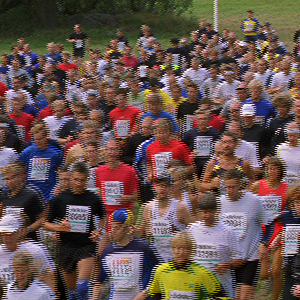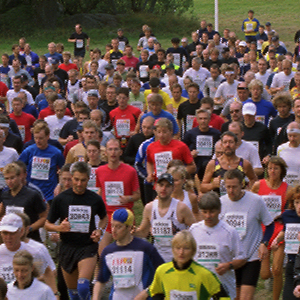
Movie Processing
Home
About Us
People
Teaching
Research
Publications
Awards
Links
Contact
Internal
In the times of digital media, the processing of video sequences and movies
becomes more important every year. A particular challenge in the context of
video processing is the fact that objects typically move between subsequent
frames. Hence, algorithms developed for image processing cannot simply be
extended by the time dimension without significant loss of quality.
Evidently, motion information has to be taken into consideration, whenever
any computation takes place. A typical example for video processing is
deinterlacing:

|

|
-
Deinterlacing
In the era of HDTV the conversion of videos from deinterlaced to progressive format becomes more and more important. The goal is thereby to recover the even and odd lines that have intentionally been omitted in the transmission process to achieve higher frame rates. To obtain optimal results, both spatial and temporal information has to be exploited for this task. This requires the use of accurate spatial interpolation methods as well as precise motion estimation techniques that carefully steer the temporal interpolation process. In [1] we developed such an algorithm based on motion-compensated anisotropic diffusion. It combines the quality of sophisticated directional motion-adaptive interpolation schemes with the accuracy of recent motion estimators.
-
Framerate Conversion and Retiming
Another important application of motion information in the context of video processing is the linear or nonlinear temporal resampling of recorded video sequences (framerate conversion, retiming). To this end, additional frames are computed by interpolation along the estimated motion trajectories. Currently, a variant of our real-time algorithm presented in [2] is used by the Rhythm and Hues Studios in Hollywood for the retiming of action scenes. A recent movie that makes use of our optic flow algorithms is Fast and Furios.
-
M. Ghodstinat, A. Bruhn, J. Weickert:
Deinterlacing with motion-compensated anisotropic diffusion.
In D. Cremers, B. Rosenhahn, A. Yuille, F. Schmidt (Eds.): Statistical and Geometrical Approaches to Visual Motion Analysis. Lecture Notes in Computer Science, Vol. 5604, pp. 91-016, Springer, Berlin, 2009. -
A. Bruhn, J. Weickert:
Towards ultimate motion estimation: Combining highest accuracy with real-time performance.
In Proc. Tenth IEEE International Conference on Computer Vision, Vol. 1, 749-755, IEEE Computer Society Press, 2005.
MIA Group
©2001-2023
The author is not
responsible for
the content of
external pages.
Imprint -
Data protection